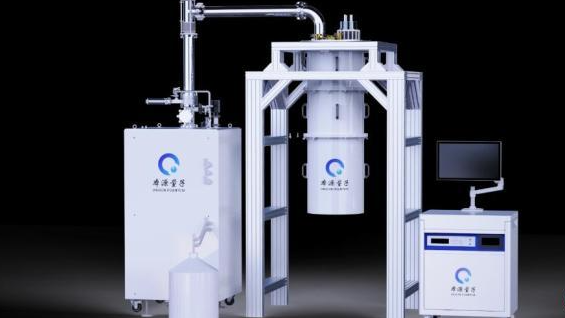A recent progress in quantum communication by Prof. Pan and his team.
Paper:
News release:
中国科大实现远距离测量设备无关的自由空间-光纤混合量子密钥分发网络实验
近日,中国科学技术大学潘建伟及其同事彭承志、曹原等与清华大学王向斌,中科院上海微系统所尤立星等人合作,首次在国际上实现了远距离测量设备无关的自由空间-光纤混合量子密钥分发网络实验,并此基础上完成了白天高背景噪声条件和卫星-地面多普勒频移补偿等验证。相关成果于2023年9月6日(北京时间)在线发表在国际学术期刊《物理评论快报》杂志上 [Phys. Rev. Lett. 131, 100802 (2023)]。这项成果全方位验证了星地间测量设备无关量子密钥分发(MDI-QKD)的可行性,向基于卫星的全球化、高安全性量子通信网络迈出了重要一步。
MDI-QKD协议利用双光子干涉技术消除了探测端的所有安全漏洞,无需对测量端的量子设备进行任何安全性假设,被认为是各种量子密钥分发协议中的最佳候选协议之一;而利用自由空间信道和卫星是目前实现全球化量子通信网络的最有效途径。2020年,实验团队通过对独立光源锁频、独立时钟同步、抗强湍流的自适应光学[Opt. Express 28, 36600 (2020); Opt. Express 30, 11684 (2022)] 等技术的发展,在国际上首次将该协议拓展到自由空间信道 [Phys. Rev. Lett. 125, 260503 (2020)]。
在本工作中,实验团队进一步挖掘了MDI-QKD协议的潜能,并探索将其扩展到卫星平台的可行性。为了实现实用化的星地MDI-QKD网络,需要克服自由空间与光纤组网、白天高背景噪声以及多普勒频移等困难。首先,量子干涉测量可作为天然的星型网络节点,非常方便的连接自由空间和光纤信道。实验团队通过构建多个发射端和信道,配合自适应光学技术和单模光纤耦合,演示了自由空间-光纤接口以及星形网络拓扑结构。同时,实验团队首次揭示了基于双光子干涉的符合探测可以使MDI-QKD协议获得极大的容忍背景噪声的能力,实现了正午强烈日光背景下的MDI-QKD实验演示。更近一步,面向星地间存在高速相对运动的情形,实验团队模拟并补偿了卫星过境期间的多普勒频移,将全程的HOM干涉可见度提高到接近理论极限。通过这些实验研究,实验团队全方位验证了星地MDI-QKD的可行性,为未来天地一体、高安全性量子通信网络的构建奠定了坚实基础。
Paper:
Free-Space and Fiber-Integrated Measurement-Device-Independent Quantum Key Distribution under High Background Noise
Measurement-device-independent quantum key distribution (MDI QKD) provides immunity against all attacks targeting measurement devices. It is essential to implement MDI QKD in the future global-scale quantum communication network. Toward this goal, we demonstrate a robust MDI QKD fully covering daytime, overcoming the high background noise that prevents BB84 protocol even when using a perfect single-photon source. Based on this, we establish a hybrid quantum communication network that integrates free-space and fiber channels through Hong-Ou-Mandle (HOM) interference. Additionally, we investigate the feasibility of implementing HOM interference with moving satellites. Our results serve as a significant cornerstone for future integrated space-ground quantum communication networks that incorporate measurement-device-independent security.News release:
中国科大实现远距离测量设备无关的自由空间-光纤混合量子密钥分发网络实验
近日,中国科学技术大学潘建伟及其同事彭承志、曹原等与清华大学王向斌,中科院上海微系统所尤立星等人合作,首次在国际上实现了远距离测量设备无关的自由空间-光纤混合量子密钥分发网络实验,并此基础上完成了白天高背景噪声条件和卫星-地面多普勒频移补偿等验证。相关成果于2023年9月6日(北京时间)在线发表在国际学术期刊《物理评论快报》杂志上 [Phys. Rev. Lett. 131, 100802 (2023)]。这项成果全方位验证了星地间测量设备无关量子密钥分发(MDI-QKD)的可行性,向基于卫星的全球化、高安全性量子通信网络迈出了重要一步。
MDI-QKD协议利用双光子干涉技术消除了探测端的所有安全漏洞,无需对测量端的量子设备进行任何安全性假设,被认为是各种量子密钥分发协议中的最佳候选协议之一;而利用自由空间信道和卫星是目前实现全球化量子通信网络的最有效途径。2020年,实验团队通过对独立光源锁频、独立时钟同步、抗强湍流的自适应光学[Opt. Express 28, 36600 (2020); Opt. Express 30, 11684 (2022)] 等技术的发展,在国际上首次将该协议拓展到自由空间信道 [Phys. Rev. Lett. 125, 260503 (2020)]。
在本工作中,实验团队进一步挖掘了MDI-QKD协议的潜能,并探索将其扩展到卫星平台的可行性。为了实现实用化的星地MDI-QKD网络,需要克服自由空间与光纤组网、白天高背景噪声以及多普勒频移等困难。首先,量子干涉测量可作为天然的星型网络节点,非常方便的连接自由空间和光纤信道。实验团队通过构建多个发射端和信道,配合自适应光学技术和单模光纤耦合,演示了自由空间-光纤接口以及星形网络拓扑结构。同时,实验团队首次揭示了基于双光子干涉的符合探测可以使MDI-QKD协议获得极大的容忍背景噪声的能力,实现了正午强烈日光背景下的MDI-QKD实验演示。更近一步,面向星地间存在高速相对运动的情形,实验团队模拟并补偿了卫星过境期间的多普勒频移,将全程的HOM干涉可见度提高到接近理论极限。通过这些实验研究,实验团队全方位验证了星地MDI-QKD的可行性,为未来天地一体、高安全性量子通信网络的构建奠定了坚实基础。

